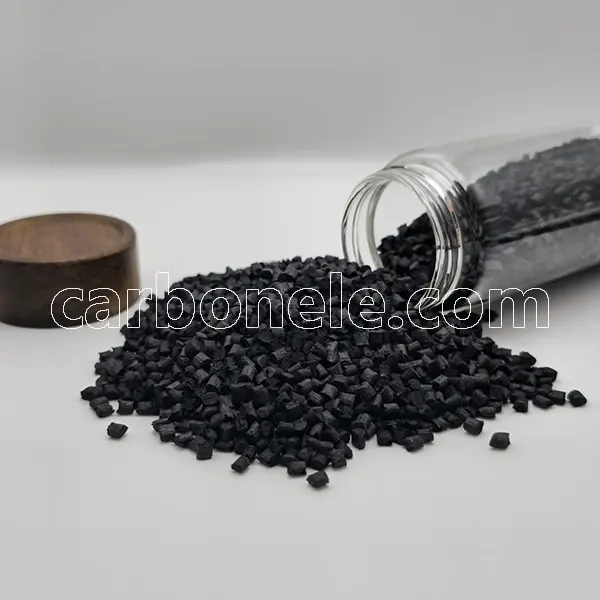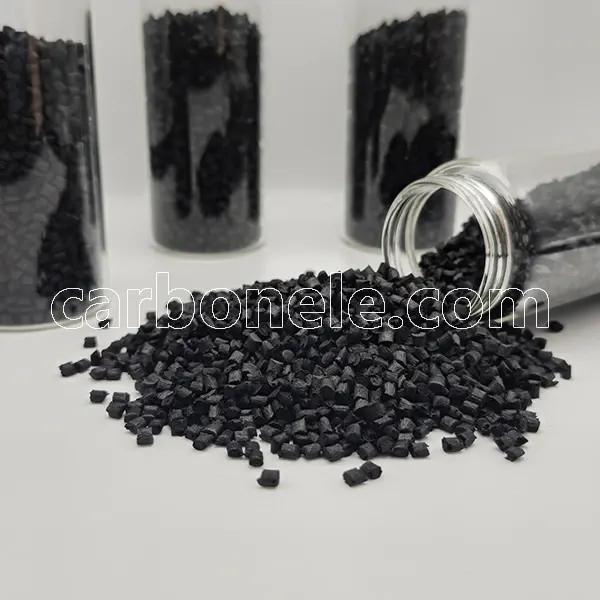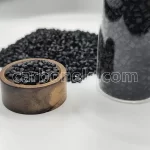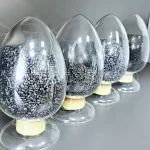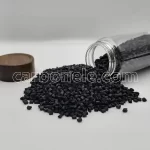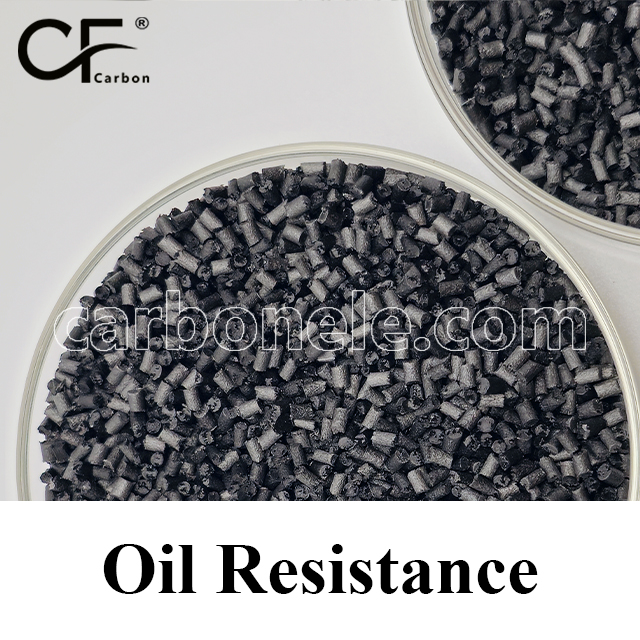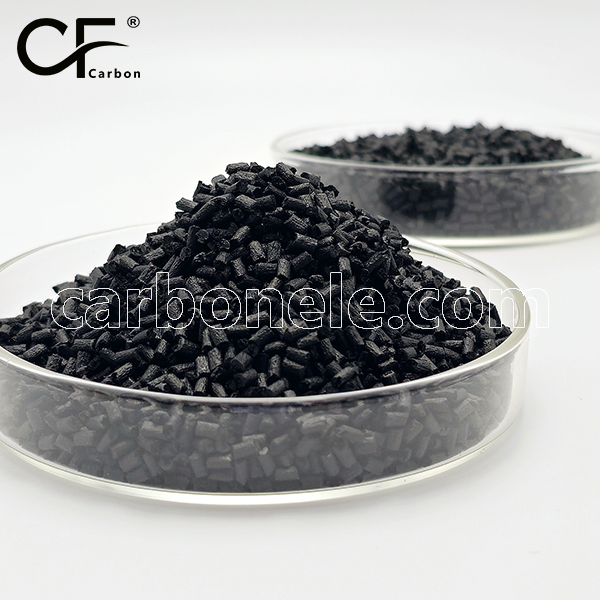
Nylon PA MXD6 CF50 Carbon Fiber Filled Polymers
MXD6 CF50 creats a composite with exceptional mechanical strength, stiffness, and thermal stability. It’s ideal for demanding applications in automotive, aerospace, and industrial sectors where lightweight, durable materials are essential. It offers enhanced performance, reliability, and dimensional stability, making it a preferred choice for components requiring strength and resilience under challenging operating conditions.
- Manufacturer: Carbon New Material
- OEM/ODM: Acceptable
- Color: Black
- Free Samples: ≤25kgs
- MOQ: 100kgs
- Port: Xiamen
- Model No.: MXD6-CF-BCA5
What’s it?
Nylon PA MXD6 CF50, or carbon fiber filled polymers, represent a significant advancement in engineering materials, blending the robust properties of nylon with the reinforcing strength of carbon fibers.
This composite material offers a compelling solution for applications requiring high mechanical strength, stiffness, and dimensional stability. Here, we delve into the composition, properties, applications, and benefits of Nylon PA MXD6 CF50.
Nylon PA MXD6 CF50 is composed of nylon PA MXD6 (Polyamide MXD6) filled with 50% carbon fibers. Polyamide MXD6 itself is known for its excellent barrier properties against gases like oxygen and carbon dioxide, as well as its high melting point and stiffness.
What are advantages?
The addition of carbon fibers further enhances these properties:
1. Mechanical Strength: The incorporation of carbon fibers significantly increases the tensile strength and modulus of the base nylon matrix.
This makes Nylon PA MXD6 CF50 exceptionally strong and resistant to deformation under load.
2. Stiffness: Carbon fibers are renowned for their stiffness-to-weight ratio. By adding them to nylon, the composite material becomes stiffer, which is crucial for applications where dimensional stability and precision are paramount.
3. Dimensional Stability: Compared to unreinforced nylons, Nylon PA MXD6 CF50 exhibits improved dimensional stability over a wide range of temperatures.
This is advantageous in applications where parts need to maintain their shape and size despite varying environmental conditions.
4. Heat Resistance: The carbon fibers contribute to enhancing the thermal stability of the material, allowing it to withstand higher temperatures before deforming or losing its mechanical properties.
Which application fields will it be used in?
The unique combination of properties makes Nylon PA MXD6 CF50 suitable for a variety of demanding applications across different industries:
– Automotive: Used in components where high strength, stiffness, and resistance to heat and chemicals are required, such as under-the-hood components, structural reinforcements, and housings for electronic components.
– Aerospace: Ideal for lightweight structural parts, interior components, and applications where minimizing weight while maintaining strength is critical.
– Industrial Equipment: Used in machinery components, gears, bearings, and other parts subjected to high loads and requiring excellent wear resistance and durability.
– Electronics: Applications include housings for electronic devices and components where EMI shielding and dimensional stability are important.
Benefits
Using Nylon PA MXD6 CF50 offers several key advantages:
– Weight Reduction: The high strength-to-weight ratio of carbon fibers allows for the design of lighter components without sacrificing mechanical performance.
– Enhanced Performance: Improved mechanical properties such as strength, stiffness, and dimensional stability lead to longer-lasting and more reliable products.
– Cost Efficiency: Although initial material costs may be higher compared to standard nylons, the enhanced performance and durability can lead to overall cost savings over the product lifecycle due to reduced maintenance and replacement needs.
– Versatility: Nylon PA MXD6 CF50 can be processed using standard injection molding techniques, making it versatile for a wide range of manufacturing processes and applications.
Nylon PA MXD6 CF50 represents a significant advancement in polymer composite technology, leveraging the strengths of both nylon and carbon fibers to create a material that excels in mechanical strength, stiffness, heat resistance, and dimensional stability.
Its applications span across automotive, aerospace, industrial equipment, and electronics industries, offering lightweight solutions with exceptional performance.
As industries continue to demand materials that can withstand increasingly rigorous conditions, Nylon PA MXD6 CF50 stands out as a robust and reliable choice for high-performance applications.
Learn more about CFRTPs, please click here.
MXD6 CF50 FEATURES
MXD6 CF50 features include high strength, stiffness, and heat resistance due to its blend of Polyamide MXD6 with 50% carbon fibers, making it ideal for demanding industrial and automotive applications.
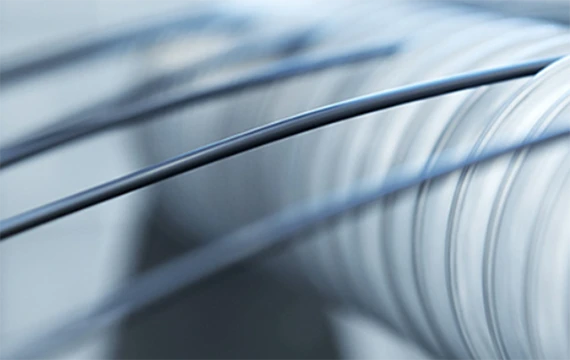

Frequently Asked Questions
Carbon (Xiamen) New Material Co., Ltd. aims to provide buyers with "one-stop" worry-free high-quality services. Here you can find all information about carbon fiber engineering plastics. If you still have questions, please send us an email for consultation!
-
How can I contact the manufacturer of a product that interests me?
When you find a product you are interested in, you can contact the manufacturer directly by sending an email and we will get back to you as soon as possible.
-
How do I find the products that interest me?
All you need to do is enter the keyword, product name in the search window and press the Enter key on your keyboard. Your search results page will then be displayed. You can also search within the product category pages on the home page. Each category is divided into subcategories, allowing you to refine your search and find products that interest you.
-
Where will I find a buying guide?
Please contact our after-sales service directly and we will provide you with a comprehensive operating guide.
-
What are CF Reinforced Thermoplastic Composites?
CF Reinforced Thermoplastic Composites are materials where carbon fibers are incorporated into a thermoplastic matrix. They combine the strength and stiffness of carbon fibers with the processability and recyclability of thermoplastics. For instance, they are used in automotive parts like bumper beams.
-
What are the benefits of CF Reinforced Thermoplastic Composites over traditional composites?
The key benefits include faster production cycles, easier recyclability, and better impact resistance. They also offer design flexibility. An example is in the manufacturing of consumer electronics casings where complex shapes can be achieved more easily.
-
How are CF Reinforced Thermoplastic Composites processed?
Common processing methods include injection molding, extrusion, and compression molding. Injection molding is widely used for mass production. For example, in the production of small components for the medical industry.
-
What industries use CF Reinforced Thermoplastic Composites?
They are utilized in aerospace, automotive, medical, and sports equipment industries. In aerospace, they can be found in interior components. In the medical field, they might be used in prosthetics.
-
How does the carbon fiber content affect the properties of the composites?
Higher carbon fiber content generally leads to increased strength and stiffness but may reduce ductility. A moderate content is often balanced for specific applications. For example, a higher content might be preferred in structural parts of a race car.
-
What are the challenges in using CF Reinforced Thermoplastic Composites?
Challenges include higher material costs, complex processing equipment requirements, and ensuring uniform fiber dispersion. Issues with adhesion between the fibers and the matrix can also arise. An example is in achieving consistent quality in large-scale production.










